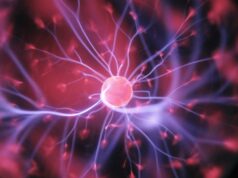
Engineers and researchers in the Institute of Bioelectronic Medicine at the Feinstein Institutes for Medical Research have developed a novel, fully implantable, wireless bidirectional vagus nerve stimulation (VNS) and sensing device for research in mice. Details about the device and its capabilities, published in the journal Biosensors and Bioelectronics, outline the potential to transform how bioelectronic medicine research is conducted in labs worldwide, a Feinstein Institutes press release states.
Bioelectronic medicine is a new approach to treating and diagnosing disease and injury that has emerged from the Feinstein Institutes’ labs, the release continues. This emerging field of science represents a convergence of neuroimmunology and technology, which uses electricity to stimulate the nervous system—particularly the vagus nerve.
“Neuromodulation and bioelectronic medicine hold the potential to treat a variety of diseases without the use of traditional pharmaceuticals and their potential side-effects—however, scaling devices to the size needed for studies in mice has been very challenging,” said Timir Datta, assistant professor in the Institute of Bioelectronic Medicine at the Feinstein Institutes and senior author on the paper.
“This new device will finally enable the fundamental preclinical studies needed to inform future clinical trials that could lead to potentially revolutionary bioelectronic therapies for patients in need.”
Datta and his team designed and built the new device using only off-the-shelf, commercially available components and 3D-printed parts to ensure other researchers can also build and use this system. Their paper in Biosensors and Bioelectronics describes how the device was used to apply VNS, and sense physiological and neural signals.
The new device is compatible with different types of electrodes and sensors, and can be used for applications other than VNS, such as deep brain stimulation (DBS) or pain relief, according to the release. The device is also wirelessly rechargeable, meaning the mouse being studied remains completely free to move and interact with its environment, which will allow researchers to design long-term studies to look at disease treatment progression.
“Basic science in mice is foundational to developing new devices and effective treatments for patients,” said Kevin J Tracey, president and CEO of the Feinstein Institutes. “By offering new methods for other labs to use in their neuromodulation work, Dr Datta and his team are leading the way to new discoveries in neuroimmunology and bioelectronic medicine research.”













